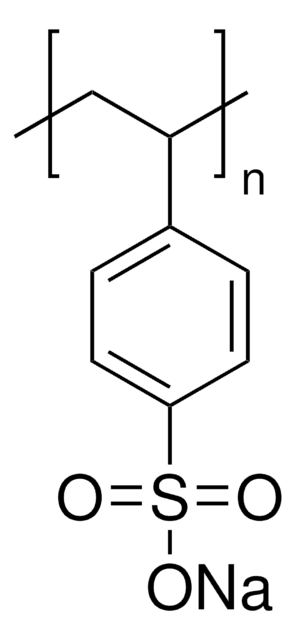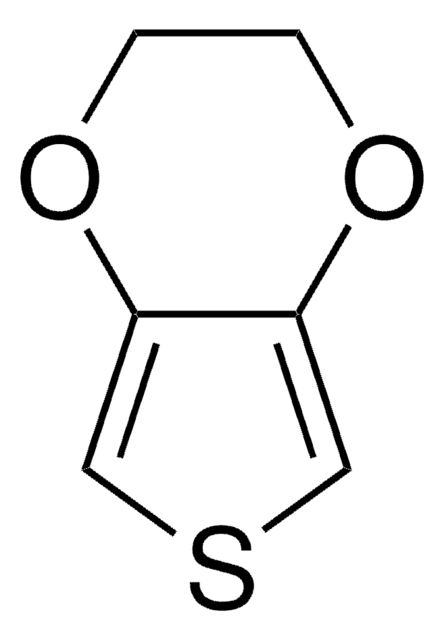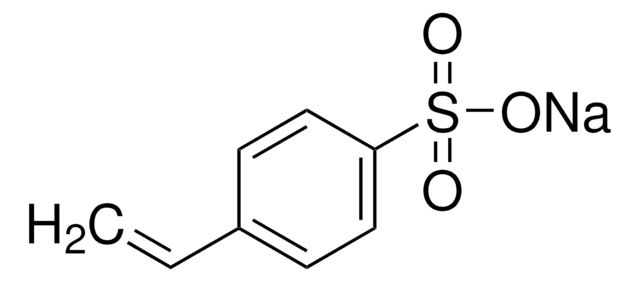434574
Poly(sodium 4-styrenesulfonate)
average Mw ~1,000,000, powder
Sinônimo(s):
PSS, Poly(4-styrenesulfonic acid) sodium salt
About This Item
Produtos recomendados
forma
powder
peso molecular
average Mw ~1,000,000
viscosidade
70-170 cP, 10 wt. % in H2O(25 °C, Brookfield)(lit.)
pf
450 °C (dec.)
solubilidade
H2O: soluble
densidade
0.801 g/mL at 25 °C (lit.)
InChI
1S/C8H8O3S/c1-2-7-3-5-8(6-4-7)12(9,10)11/h2-6H,1H2,(H,9,10,11)
chave InChI
MAGFQRLKWCCTQJ-UHFFFAOYSA-N
Procurando produtos similares? Visita Guia de comparação de produtos
Aplicação
Características e benefícios
Código de classe de armazenamento
11 - Combustible Solids
Classe de risco de água (WGK)
WGK 2
Ponto de fulgor (°F)
Not applicable
Ponto de fulgor (°C)
Not applicable
Equipamento de proteção individual
Eyeshields, Gloves, type N95 (US)
Escolha uma das versões mais recentes:
Já possui este produto?
Encontre a documentação dos produtos que você adquiriu recentemente na biblioteca de documentos.
Os clientes também visualizaram
Artigos
Professor Rivnay (Northwestern University, USA) discusses using organic mixed conductors as an alternative to efficiently bridge the ionic world of biology with contemporary microelectronics.
We present an article that discusses two applications in particular; first, using these layers as polyelectrolyte membranes to control permeability.
Nossa equipe de cientistas tem experiência em todas as áreas de pesquisa, incluindo Life Sciences, ciência de materiais, síntese química, cromatografia, química analítica e muitas outras.
Entre em contato com a assistência técnica






